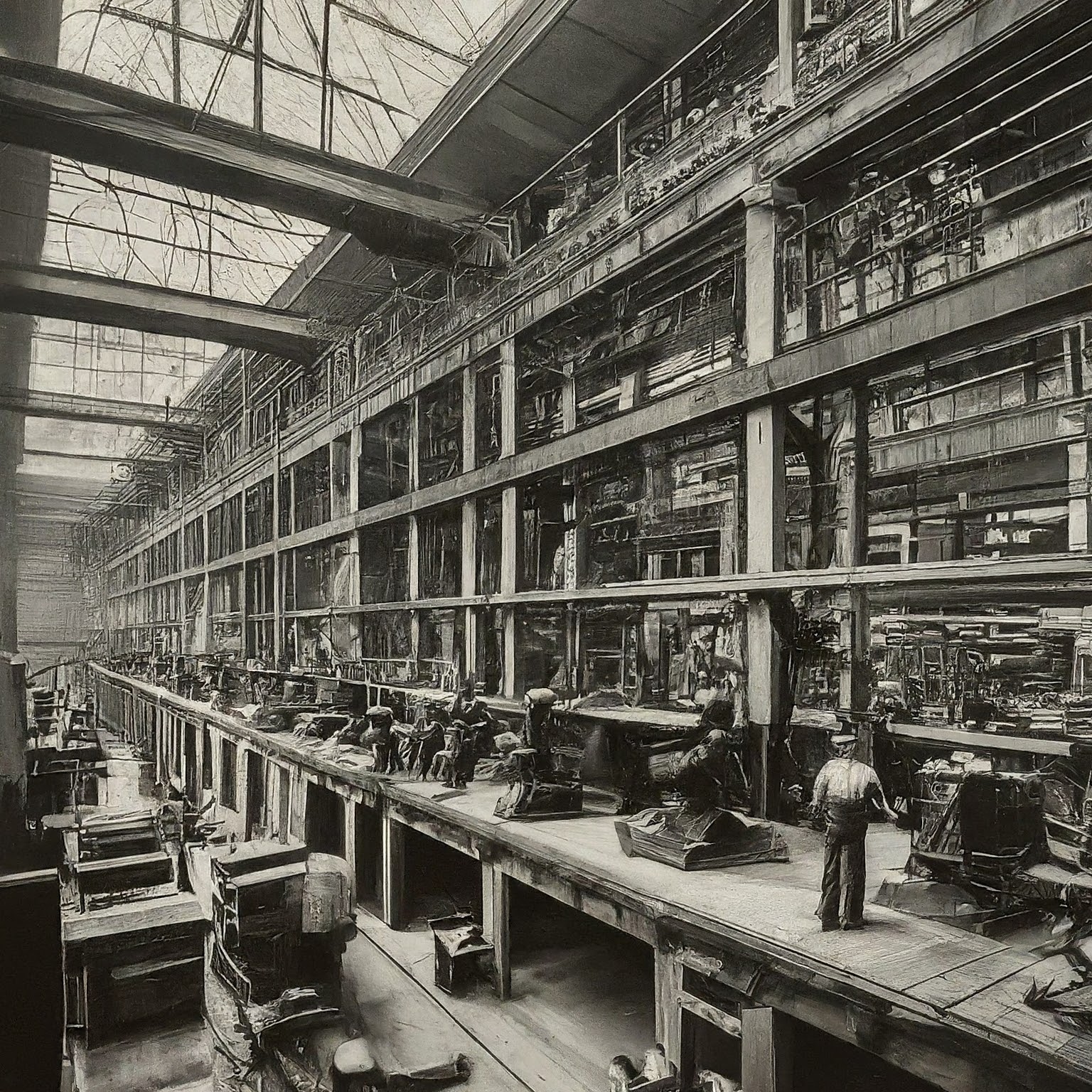About the Author:
John Thompson has spent over 20 years navigating the ever-evolving landscape of American industry. With a background in economics and a passion for business trends, John enjoys sharing his insights and helping readers understand the forces shaping the world of commerce.
Headings:
- The Titans of the Assembly Line: A Glimpse at 1994’s Top Earners
- The Rise of the iConomy: How Tech Titans Reshaped the Landscape
- A Tale of Two Eras: A Comparative Look (Table Included Here)
- Innovation and Evolving Consumer Habits: The Engine of Change
- The Road Ahead: Navigating the Future of American Business
- Key Takeaways for Business Leaders and Investors
- Conclusion: Embracing Change and Staying Ahead of the Curve

The American economy, a dynamic force constantly in flux, has undergone a seismic shift in recent decades. Once dominated by industrial giants whose smokestacks painted the skylines and assembly lines churned out tangible products, the landscape of top-earning companies has been dramatically reshaped. In 1994, familiar names like Exxon, the world’s leading oil producer, and Walmart, the retail behemoth, sat atop the revenue throne. Today, tech titans like Alphabet (Google) and Amazon, along with e-commerce giants, reign supreme, reflecting a new era driven by innovation, digital services, and the convenience of online commerce. This article explores this fascinating transformation, delving into the factors that propelled the rise of tech titans and what it means for the future of American business.
The Titans of the Assembly Line: A Glimpse at 1994’s Top Earners
A trip back to 1994 paints a picture of a very different American economic landscape. Legacy companies like Exxon, fueled by the black gold of the oil industry, dominated the top of the revenue charts. These industrial giants thrived on established brand recognition, economies of scale, and a focus on physical goods production and efficient distribution channels. Walmart, another name synonymous with the era, exemplified this focus on efficiency. Their low-cost, high-volume strategy revolutionized retail, offering consumers a vast selection of products at competitive prices. General Motors, a titan of the automobile industry, rounded out the top three, showcasing the dominance of traditional manufacturing in the American economy of the time (Forbes, “The World’s Biggest Public Companies in 1994,” 2023).

The Rise of the iConomy: How Tech Titans Reshaped the Landscape
Fast forward to 2023, and a new breed of companies has taken center stage. Tech giants like Alphabet (Google), Apple, and Amazon now occupy the top spots, ushering in an era dubbed the “iConomy.” These innovative companies are fueled by a relentless pursuit of progress, with intellectual property and user experience at the forefront of their strategies. Alphabet, through Google’s search engine and advertising dominance, exemplifies this focus on innovation. Apple, with its sleek devices and intuitive operating systems, has redefined consumer electronics. Amazon, the e-commerce behemoth, has revolutionized retail, offering unparalleled convenience and selection at the click of a button (Fortune, “Fortune 500 2023 Ranking,” 2023).
A Tale of Two Eras: A Comparative Look
The table below provides a clear contrast between the key features that defined the industrial giants of 1994 and the tech titans of 2023. It highlights the dramatic shift in focus from resource extraction and physical goods production to the intangible forces of innovation, digital services, and online commerce.

A Tale of Two Eras:
| Feature | Industrial Giants (1994) | Tech Titans (2023) |
|---|---|---|
| Top Industries | Oil & Gas, Retail, Manufacturing | Technology, Retail (E-commerce), Software |
| Key Drivers | Resource extraction, physical goods production | Innovation, digital services, online commerce |
| Competitive Advantage | Economies of scale, established brands | Intellectual property, agility, disruption |
| Focus on | Efficiency, cost reduction | User experience, data-driven insights |
Innovation and Evolving Consumer Habits: The Engine of Change
Several factors converged to create the perfect storm that reshaped the American economic landscape. The rise of the internet and advancements in technology fueled a surge in innovation, leading to the development of groundbreaking products and services that fundamentally altered consumer behavior.
One of the key drivers of this change was the democratization of information brought about by the internet. No longer confined to the physical shelves of a library or bookstore, knowledge became readily accessible at one’s fingertips. This empowered consumers to research products, compare prices, and make informed purchasing decisions – a stark contrast to the traditional model where consumers relied on advertising and limited information channels.
Furthermore, the internet fostered the rise of e-commerce, offering a convenient and personalized shopping experience. Platforms like Amazon revolutionized retail by providing a vast selection of products, competitive pricing, and swift delivery options, all from the comfort of one’s home. This shift in consumer behavior, from brick-and-mortar stores to online marketplaces, significantly impacted the traditional retail giants of 1994.

The Road Ahead: Navigating the Future of American Business
The rise of tech titans and the decline of traditional industrial giants serve as a powerful reminder of the dynamic nature of the American economy. Businesses that fail to adapt to evolving consumer habits and technological advancements risk being left behind. So, what does the future hold for American business?
Emerging technologies like artificial intelligence (AI) and automation are poised to further reshape the landscape. Businesses that embrace these advancements by integrating AI into their operations or leveraging automation to streamline processes will likely gain a competitive edge. Additionally, the rise of big data and analytics presents a powerful opportunity. By harnessing the vast amount of customer data available, businesses can gain invaluable insights into consumer behavior, preferences, and buying patterns. This knowledge can be used to personalize marketing strategies, improve product offerings, and ultimately, enhance customer satisfaction.
Key Takeaways for Business Leaders and Investors
The story of America’s top earners offers valuable lessons for business leaders and investors alike. Here are some key takeaways:
- Embrace Innovation: Innovation is the lifeblood of success in today’s dynamic economy. Companies must constantly seek new ways to improve their products, services, and operations.
- Focus on the Customer: Understanding and catering to the evolving needs and wants of your customers is paramount.
- Be Agile and Adaptable: The business landscape is constantly changing. Businesses that are agile and adaptable will be better positioned to navigate these changes and thrive.
- Invest in Technology: Technology is a powerful tool that can be leveraged to gain a competitive edge.
- Embrace Data-Driven Decision Making: Data analytics can provide valuable insights to inform strategic decisions.
Conclusion: Embracing Change and Staying Ahead of the Curve
The American economy is a testament to human ingenuity and adaptability. From the industrial giants of yesteryear to the tech titans of today, the landscape of top earners has constantly evolved. As we move forward, one thing remains certain: change is inevitable. Businesses that embrace change, invest in innovation, and prioritize customer satisfaction will be well-positioned to secure their place in the ever-evolving American economy.










